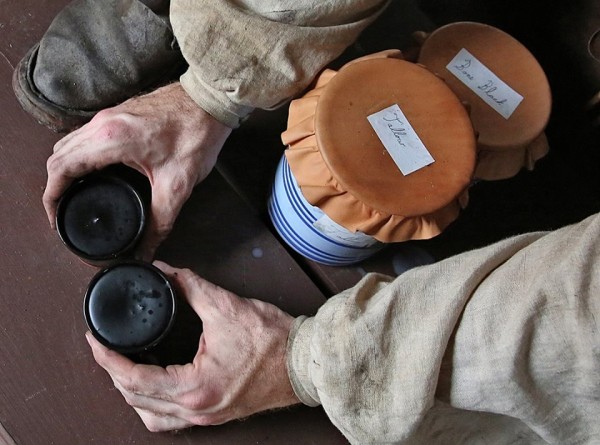
No asphalt, no sewers, plenty of mud. Those were some of the realities of colonial Virginia. So in yonder days, when calls for liberty coexisted with ankle-deep muck, how did a person aspiring to respectability keep his shoes looking new?
One answer is “black ball,” the shoe polish of the 18th century, and thanks to apprentice shoemaker Rob Welch, it’s yet another example of a small piece of history being researched and recreated in Williamsburg.
Black ball was an inexpensive, widely available ball of color that could be held easily in your hand and, when rubbed into your shoes, would give them some color and recondition the leather. George Washington’s accounts show that he ordered six to 12 per year for use in his household.
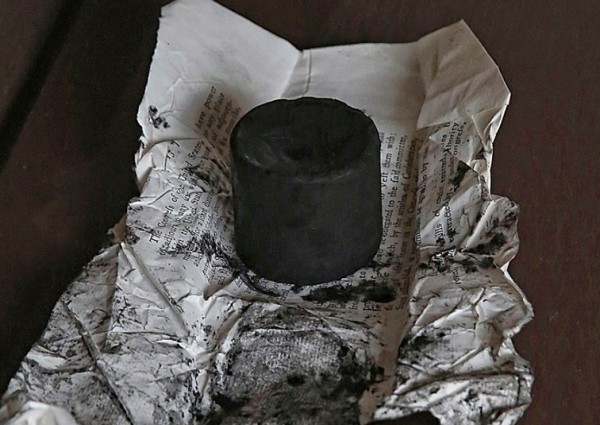
The exact ingredients vary, but the essential mixture would typically include tallow (animal fat), beeswax as a binding agent, and a pigment for coloring. Incredibly, some recipes called for mixing in some hard candy.
Rob found one recipe under the heading “To make curious black ball” in the journal of Rev. Charles Beatty, a Presbyterian minister traveling in Pennsylvania in the 1760s. “Beatty spent a great deal of time in the outdoors in all weather conditions,” said Rob. “That he considered this recipe worthy of recording suggests that it served his purposes very well.”
So that’s the recipe Rob decided to try out.
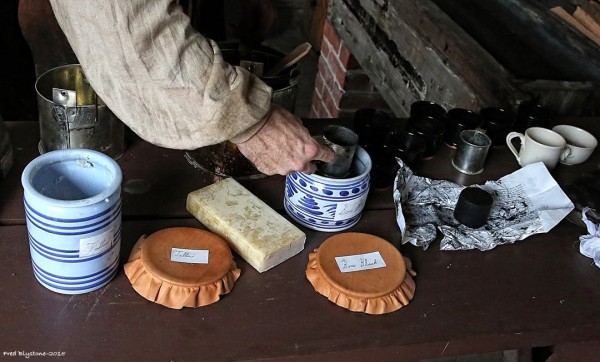
He gathered the necessary proportions: two parts mutton tallow, one part beeswax, and one part bone black (yep, that’s the ash from charred bones).
The mutton tallow came from sheep raised by Colonial Williamsburg. “Mutton suet or tallow is widely considered the best for use with leather as it has a hardness that other animal fats, such as beef or pork tallows, lack,” Rob explained.
Ingredients in hand, Rob headed over to Anderson’s Blacksmith Shop to make use of the forge to mix a batch.
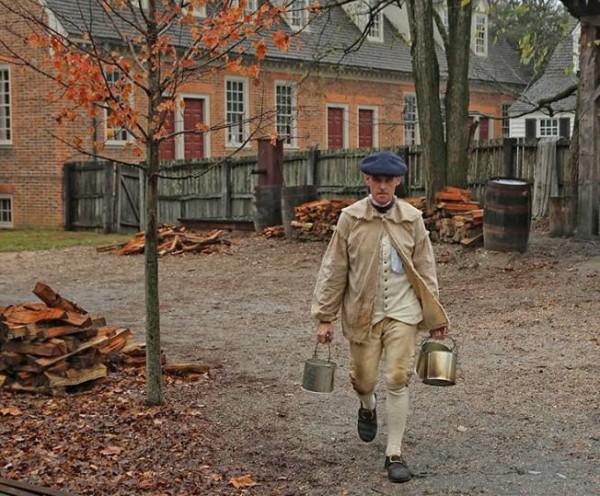
First he warmed the tallow and beeswax separately in double boilers made by the Tin Shop.
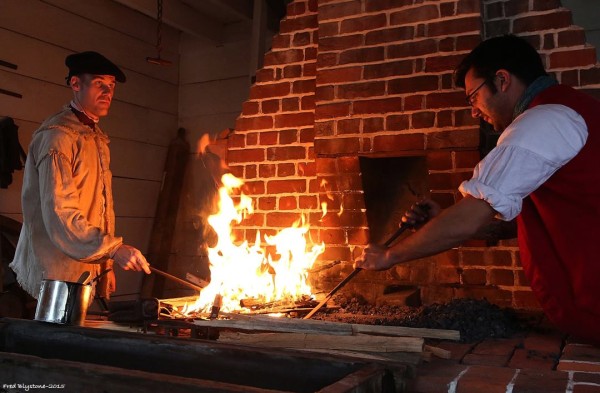
Once they were softened by the heat of the fire, Rob mixed them together in a third pot.
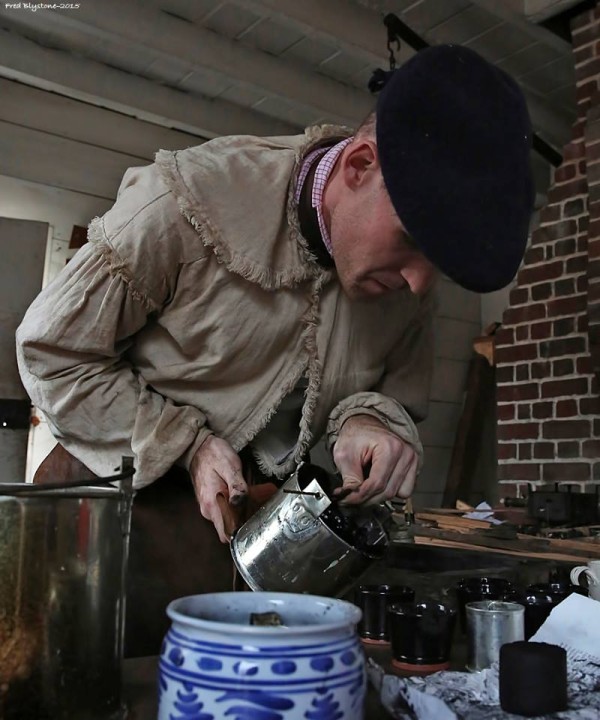
Finally, he put them in molds to set overnight. In this case, he used several redware gill cups and some creamware from Historic Area shops. After cooling overnight, the blackball, now looking pretty much like soap balls, could be popped out of the molds.
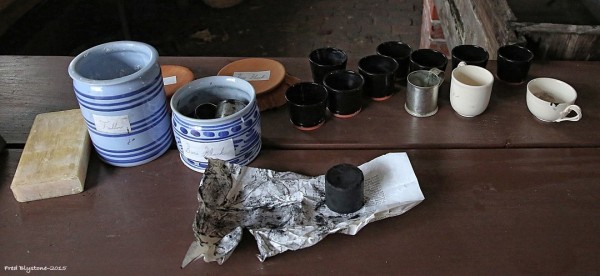
Rob plans to experiment with liquid blacking and other ways shoes were dressed in the 1700s in the coming months. In the meantime, some of Colonial Williamsburg’s interpreters have been making good use of this first batch.
In addition to putting a nice gloss on the shoes, the black ball offers some waterproofing. And since a shoe’s exterior is the rough side of the animal hide, loose fibers that pop up with wear can be patted down and made smooth again with just a pewter spoon and a little bit of blacking. Unlike modern shoe shine, it won’t even stain your hands. “It’s gratifying that our black ball is falling in line with period descriptions,” said Rob.
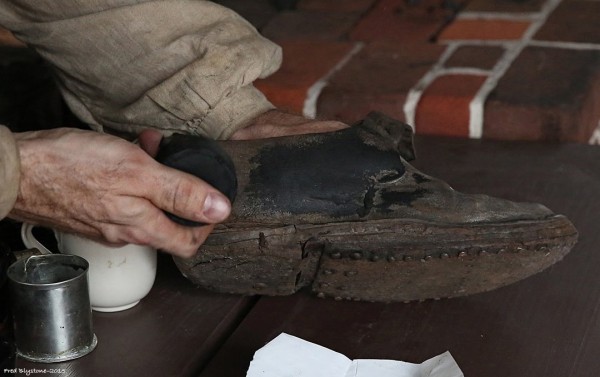
You may be wondering if everyone made their own blackball. Not typically, said Rob. Like today, why go through the hassle of gathering the ingredients when there was a ready finished product available at the shop in town? Black ball sold for about a shilling apiece for much of the 18th century. One ball could be expected to last a year, if newspaper advertisements were to be believed.
The Virginia Gazette sometimes included mentions of blackball for sale at one shop or another. A 1754 English servant’s guide by John Breues offered instructions that aren’t too different from how I learned to shine shoes from my father:
You must have three shoe-brushes; one for rubbing off the dirt, another for blacking, and a third for making them bright after being black’d. These all together will not cost upwards of twelve or sixteen pence, and will serve one Gentleman ten years, used every day.
Today, thanks to the shoemakers, the 18th century just got a little more real in Williamsburg. Who needs a shine?
Many thanks also to Fred Blystone for permission to use his photographs of Rob making black ball in November.
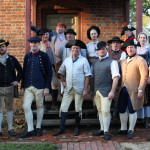

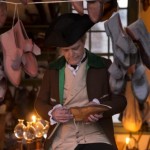
Great example of turning natural; waste. products & combining them into a natural & likely non toxic products that not only shines. but preconditions & waterproof as well!!
To get a high polish the boot was burnished using a bone, the leg bone of a deer was preferred. I still have the bone polisher my grandfather used, he was in a cavalry regiment during the first world war.
This was a very interesting articl. Colonial Williamsburg never fails to educate. I never thought about where shoe polish would have come from in the 18th century. I too was wondering if boot black will be available for purchase in the shops.
We’re still hoping that might be possible down the road a piece. Stay tuned!
I’ve made black ball at home using beef tallow, bees wax, and bone black.
Reccomend that you heat the beef tallow outdoors.
Where can bone black be purchased and how much needs to be used?
Would ladies have also used the black ball on their shoes?
During most of the 18th century, the uppers of women’s shoes were made out fabric (silk, tightly woven wool, etc) so they would not have been black balled. To keep their shoes clean, women typically had overshoes made to go with a specific pair of shoes.
You posted a before photo…would be nice to see an “after” as well.
Good idea! I’ll try to find one.
A product similar to black ball has been used by foxhunting professionals on their rough-out boots for generations, and it is traditionally applied using a deer bone. 🙂
Very interesting!
As a Civil War living historian, I’m wondering if this product was used in the Civil War era.
From what little I’ve seen, it seems to have been very similar for that era, with recipes for blacking using the same basic ingredients.
What a wonderful item. Even better is that it’s all natural. I hope the shops in the restored area carries this in near future. Great article. Thank you.
Thanks!
So are you going to start carrying black ball at the Prentis Store? I’m ready to try it!
I’ve always wondered about that. Thanks for the research sharing.
Diane